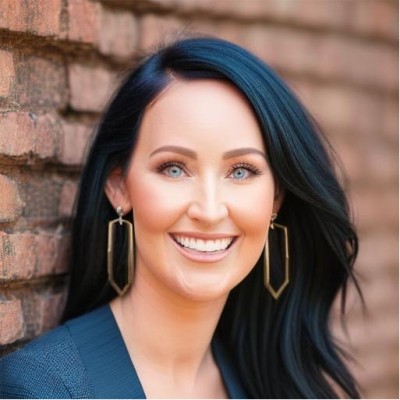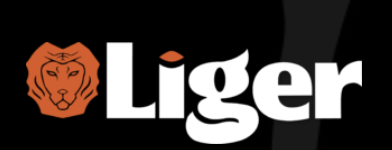EEA YouTube Show: Marketing Is Generally Broken But Can Be Fixed
 This Enterprise Engagement Alliance EEA YouTube show brings together principals of leading business-to-business marketing agencies who agree that marketing today is broken and share recommendations on how to fix it.
This Enterprise Engagement Alliance EEA YouTube show brings together principals of leading business-to-business marketing agencies who agree that marketing today is broken and share recommendations on how to fix it.Click here for links to information about EEA preferred engagement solution providers.
By Bruce Bolger
Top Line Insights
Highlights of Panelist Perspectives
About the Panelists
Click here to watch or listen to the 60-minute show or access it at any time in the ESM library.
Top Line Insights 
The panelists agree that marketing is fundamentally broken but there is a clear framework for success that has existed for decades. They say marketing is broken because:
- It has become focused on process and metrics rather than on achieving the purpose, goals, and objectives of the organization.
- The traditional rift between sales and marketing and in fact siloes across the organization continue to hamper results—there is a need to align the interests of all the stakeholders to the organization’s mission and vision with one consistent story.
- Trust is critical and to build it the brand story must be consistently and authentically shared with all stakeholders.
- Even young marketers are not being trained for the skills of modern, authentic marketing, which requires empathy and a focus on helping, not selling.
- Traditional process-oriented metrics are of little use: the focus should be on the outcomes and the people who contributed to them.
- It is now possible for most organizations to identify the people most likely to buy and gain their permission to communicate with them over time using useful information, customer voice, gamification, entertainment, events, etc., as appropriate.
- The old process-oriented metrics are out—the most effective metrics measure outcomes and a qualitative understanding of what drives customer and other stakeholder engagement.
- Forget about trying to understand the precise source of business; it's more important to be there both before and during the decisive buying moments.
-
AI will be a powerful tool for making better decisions, but people will continue to drive the process or the lack of authenticity will rapidly
 become apparent.
become apparent.
Watch the show or read below for more details on their individual perspectives and recommendations.
Highlights of Panelist Perspectives .jpeg)
Note: Panelist insights have been condensed for brevity. Watch the show for the many nuances.
Starr. Over the last 10 years, the models and the systems that we have been using in sales and marketing have broken down to the point of not being usable. They're focused on driving leads, for instance, and setting sales meetings based on a linear buyers journey. That's supposed to result in a cascade of leads. That model has broken down over time. I think I know why it's happening, and I think I know what to do about it. So, I wrote a book hoping that I could provide some answers to folks who are asking a lot of questions right now.
It's crazy to say this out loud because I think it ought to be assumed: organize your marketing, your brand, your sales efforts around your customer....Not around your processes, not around your product or your business goals but around your customer and the experience that you want to create for them.
Holtzclaw. I’ll lean into the mission statement for Liger: Saving the world from boring broken marketing. And B2B marketing is either boring or it is broken, or it is both. We need to rethink the entire approach. No. 1 thing I would tell someone is that it's a lack of consistency; people see marketing as like a one-shot deal. It's something that you must build over time that you continue to nurture. We tell our clients that marketing should create “funlandia.” People don’t want to be sold but they like to buy. Measurement needs to recognize that it’s almost impossible to pinpoint precisely how people have heard about a company or what triggered them to make a buying decision. The state of sales and marketing cooperation, let alone alignment across the organization, remains a major impediment to effective marketing outcomes. (Click here to a recent white paper on AI and marketing produced by Liger Partners.)
Cogar Yeakley. Organizations must start by getting to the heart of what they do, why they do it; framing that in terms of what really matters in the first place and getting back to an authentic reconnection with the buyer. It starts with a strategic narrative that leans into our purpose and our impact and why we are doing what we do in in the first place and then communicating it in a way that reaches and resonates with the right people and allows people to become emotionally involved with the story. We can’t just be looking at the cerebral part of marketing but how we use our marketing and communications strategies and tactics to tell authentic stories to all stakeholders.
What's the whole point of the organization? Why did we start this company in the first place? At the end of the day, what are we hanging our hats on? Was it worth it? What are the milestones along the way and how do we then devise a plan to get there. How do we inspire our team, our clients, communities, and other stakeholders to champion that movement with us? (Click here for an interview with Cogar Yeakley in ESM: “How to Increase Your Sales and Profits Through Effective B2B Content Marketing.”)
Bolger. It starts with the organization’s purpose, goals, and objectives. It means clarifying the organization’s reason for being and value proposition and then making sure that message goes out to all stakeholders consistently through every relevant engagement. It’s about identifying and building relationships with the people mostly likely not by selling but by helping—sharing useful information, promotions and gamification, entertainment, and listening to the customers—to be viewed as a trusted partner when people are in a buying mode. Create a sales enablement process that gets useful information into the hands of all sales and customer-facing people so that they can share it at critical steps in the buyer’s journey. Focus just as much on delivering the promise at every touch point after the sale. Measure results based on outcomes and engagement, including overall sales, revenues/cost per customer; actual referrals (not just willingness to refer); and engagement in communications, digital, events, gamification, entertainment, etc.
Click here for this ESM article: Take This Quick Test to See if Your Permission Marketing Strategy Is Up to Date.
About the Panelists 
Eric V. Holtzclaw is Founding Partner of Liger, a full-service B2B marketing firm that has set out to save the world from boring, broken marketing. Holtzclaw and his team of Ligers bring unconventional thinking and creativity to make unknown brands known and stand out against their competition.
He is a founding member of multiple successful start-up companies, including one of the first profitable Internet enterprises, serves as a trusted advisor to Fortune 500 companies and small business owners alike.

Holtzclaw uses his extensive experience starting, growing, and running his own businesses in concert with a knowledge base from over a decade of business and consumer interviews to accelerate a deeper understanding of the true behaviors, motivations, goals, preferences and expectations of customers and teams.
Bret Starr, author of the new book, A Humble Guide to Fixing Everything in Brand, Marketing, And Sales, founded the Starr Conspiracy agency 20 years ago, which he says now has 50 team members, with offices in Fort Worth and San Francisco. It has worked with nearly a thousand clients and has helped clients “become market leaders by pushing the boundaries of brand, marketing, and sales experience (and our agency has played a modest role in the success of many of the most successful work tech brands in history), from boot-strapped start-ups to leading brands.”

As a Managing Partner at RCY Labs, Rachel Cogar Yeakley helps CEOs, entrepreneurs, and leaders scale their businesses and amplify their impact by leveraging her 20 plus years of experience as a global corporate consultant, a HubSpot Platinum Partner, and an international public speaker to deliver profit-driven, C-suite strategies and solutions.
She says she has helped generate over $3.5 billion in revenue for her clients over the past three years, and more than 80% of them have been part of mergers and acquisitions, funding, private equity, IPOs, and exits. Her company offers courses, sales training, and corporate consulting services that empower her clients to sustainably grow, multiply their bottom line, and achieve their goals with fun and ease.
Bolger, host of the EEA YouTube series, founded one of the first content marketing agencies in 1995 known as Selling Communications, which started offering information on demand for target marketing purposes via fax even before the arrival of the internet. In 1996, it launched Info-now.com, one of the first online-publishing services still online today EnterpriseEngagement.org, with the same business model more narrowly enterprise engagement in business under the domain. Today, Bolger’s Enterprise Engagement Alliance is a think tank, learning platform, business development agency, and managed outsourcing company for the emerging field of stakeholder management.
ESM Is Published by The EEA: Your Source for Effective Stakeholder Management, Engagement, and Reporting
Through education, media, business development, advisory services, and outreach, the Enterprise Engagement Alliance supports professionals, educators, organizations, asset managers, investors, and engagement solution providers seeking a competitive advantage by profiting from a strategic and systematic approach to stakeholder engagement across the enterprise. Click here for details on all EEA and ESM media services.
1. Professional Education on Stakeholder Management and Total Rewards
- Become part of the EEA as an individual, corporation, or solution provider to gain access to valuable learning, thought leadership, and marketing resources to master stakeholder management and reporting.
- The only education and certification program focusing on Stakeholder Engagement and Human Capital metrics and reporting, featuring nine members-only training videos that provide preparation for certification in Enterprise Engagement.
- EEA books: Paid EEA participants receive Enterprise Engagement for CEOs: The Little Blue Book for People-Centric Capitalists, a quick implementation guide for CEOs; Enterprise Engagement: The Roadmap 5th Edition implementation guide; a comprehensive textbook for practitioners, academics, and students, plus four books on theory and implementation from leaders in Stakeholder Management, Finance, Human Capital Management, and Culture.
2. Media
- ESM at EnterpriseEngagement.org, EEXAdvisors.com marketplace, ESM e–newsletters, and library.
- RRN at RewardsRecognitionNetwork.com; BrandMediaCoalition.com marketplace, RRN e-newsletters, and library.
- EEA YouTube Channel with over three dozen how-to and insight videos and growing with nearly 100 expert guests.
3. Fully Integrated Business Development for Engagement and Total Rewards
Strategic Business Development for Stakeholder Management and Total Rewards solution providers, including Integrated blog, social media, and e-newsletter campaigns managed by content marketing experts.
4. Advisory Services for Organizations
Stakeholder Management Business Plans; Human Capital Management, Metrics, and Corporate Sustainability Reporting for organizations, including ISO human capital certifications, and services for solution providers.
5. Outreach in the US and Around the World on Stakeholder Management and Total Rewards
The EEA promotes a strategic approach to people management and total rewards through its e-newsletters, web sites, and social media reaching 20,000 professionals a month and through other activities, such as:
- Association of National Advertisers Brand Engagement 360 Knowledge Center to educate brands and agencies.














